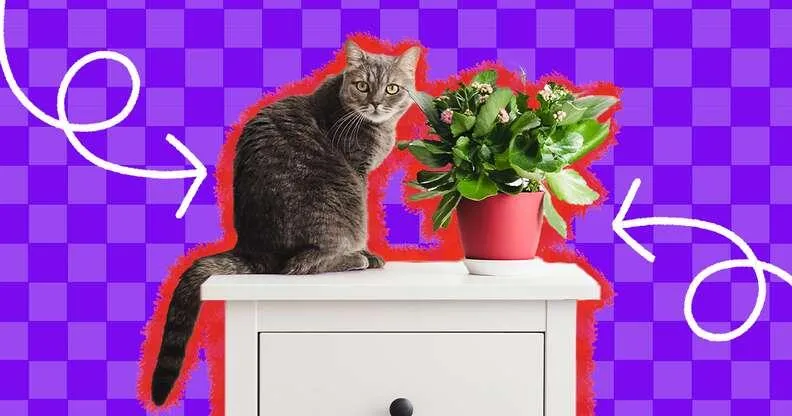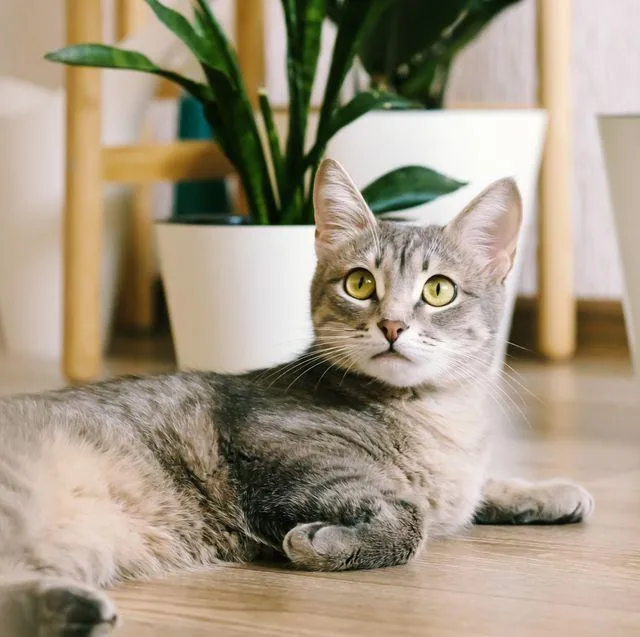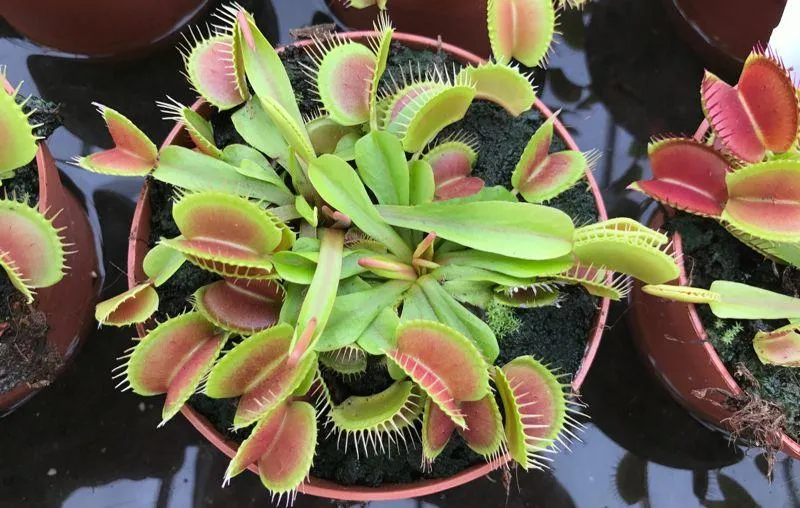Are Venus Flytraps Safe for Cats?
If you’re considering getting a venus flytrap plant as an interesting new addition to your home, you may be wondering whether these carnivorous plants are safe to have around your feline friend. As the owner of both a cat and several venus flytraps over the years, I’ve learned a few things about keeping these plant predators peacefully coexisting with pets. In this article, I’ll do my best to answer all your questions and help you determine if a venus flytrap is a good choice for your particular household.
Are Venus Flytraps Toxic to Cats?
- The short answer is that venus flytraps themselves are not considered toxic to cats. Their small traps cannot harmfully ensnare or injure pets.
- However, if a curious cat were to chew on or ingest larger portions of the plant, some mild digestive upset could possibly result from the flytrap’s hairy, bristly leaves and crunchy traps.
From my experience caring for both venus flytraps and cats over the years, I’ve found that as long as the plants are kept up high out of paw’s reach, there is very little risk of them posing any health issues for feline family members. The flytraps’ carnivorous trapping mechanism evolves specifically to catch insects, not damage the digestive systems of larger animals.
Are Venus Flytraps Safe for Kittens and Young Cats?
If you have an especially rambunctious kitten or young cat in the home that loves to chew and explore with its mouth, a venus flytrap may not be the best choice. Kittens are naturally more inquisitive and active chewers as they learn about their environments. While the plants themselves are generally not considered toxic, it’s still possible a teething kitten could mistake one for a chew toy and nibble more than intended. In these cases, it’s best to postpone getting carnivorous plants until cats are past their chewing phases.
On the other hand, for households with older, calmer cats that don’t chew on houseplants, venus flytraps can coexist peacefully as long as kept up high where paws can’t reach. Use tall plant stands or ceiling hanging planters to safely display the flytraps out of a cat’s normal territory.

How Can I Keep Venus Flytraps Away from Cats?
Here are some effective tips for safely displaying venus flytraps where cats can’t disturb or potentially chew on them:
- Mount a hanging planter from ceiling hooks to suspend the plants up high. This keeps them well above cat level.
- Place venus flytraps on tall plant stands, bookshelves, or elevated surfaces at least 3-4 feet off the ground.
- Pot individual plants into ballast planters filled with rocks or pebbles. Cats are less likely to try climbing or balancing on unstable surfaces.
- Consider greenhouse cabinets or terrariums with locking latches to fully enclose carnivorous specimen plants away from curious paws.
- Designate a tall, narrow “flytrap shelf” just out of reach that cats can look at but not access the plants.
Will Cats Be Tempted to Bat or Play with Venus Flytraps?
It’s in a cat’s nature to be drawn to tracking and pouncing on moving objects. With the way venus flytraps snap their traps shut around captured bugs, some felines may see this rapid plant movement as an invitation to swat or paw at the trap. While the plants themselves don’t pose a direct risk, such play could damage delicate flytrap structures over time.
When first bringing venus flytraps home, carefully monitor cats for any initial interest in batting or tapping at the moving traps. Gentle discouragement may be needed to train cats not to view the plants as toys. Placing venus flytraps in locations up high and out of reach generally eliminates temptation once initial curiosity is past. Over several plant introductions, most cats will quickly lose interest in flytraps left undisturbed on their shelves.
Creating a Venus Flytrap-Friendly Home with Cats
With a littleplanning and common-sense placement of carnivorous plants, it’s definitely possible for households to enjoy both venus flytraps and feline friends living in harmony. Consider your individual cat’s personality traits and behaviors to determine the best setup. Focus on displaying flytraps in elevated, stable locations inaccessible to jumping, climbing or batting paws.

Monitor interactions at first to ensure plants and pets coexist peacefully without stressing either party. Cats are occasionally naturally curious, so be ready with gentle redirection if exploring plant shelves. Taking these precautions helps maximize the joy of keeping both carnivorous plant specimens and furry companions under one roof. With care and care, venus flytraps canBasically, as long as venus flytraps are kept up high and out of reach, most cats will gladly ignore them as harmless houseplants.
So in summary – while venus flytraps themselves are not considered toxic, it’s still best to position them safely away from chewing kittens or curious cats that may bat or disturb the delicate traps. With a little common-sense placement, venus flytraps can coexist peacefully in the home as interesting display plants that pose very little risk to furry friends. I hope this helps provide some clarity and reassurance on keeping carnivorous plants in cat-friendly households. Let me know if you have any other questions!
Key Details about Venus Flytraps
| Part | Description |
|---|---|
| Leaves | Modified into snap traps with trigger hairs on the edges |
| Trigger Hairs | Detect prey touching them and cause the trap to close |
| Prey | Small flying or crawling insects, arachnids like spiders |
| Closure Time | Traps shut within 0.1 seconds of being triggered |
| Reopening Time | Traps take 3-14 days to reopen depending on size of prey |
| Habitat | Bogs and wet savanna areas along the east coast of the US |
FAQ
-
Can a venus fly trap be kept as a pet?
Basically, venus fly traps are not really suitable as pets. While they can live in a home, they require very specific care that is challenging for most people. So it’s better to admire them online or at a botanical garden!
-
Will a venus fly trap hurt my cat?
A Venus fly trap shouldn’t be too much of a threat to your feline friend. However, their trap mechanism could potentially close on a curious paw. Just to be safe, it’s best to keep these plants up high where cats can’t reach or behind a barrier. On the other hand, cats are known to be pretty agile – so your pet may see the plant as a fun new toy! Kind of depends on the individual cat.

-
Can I feed my Venus fly trap meat?
While Venus fly traps get their name from eating flies, feeding them meat is not really a great idea. They’ve evolved to trap insects as their main food source. According to botanists, meats and salts can actually be harmful to the plant. Stick with the all-natural diet of bugs!
-
What lighting do Venus fly traps need?
Venus fly traps need lots of sunlight – around 6 hours per day minimum. They grow naturally in bogs that get full sun, so these conditions need to be replicated for the plant to thrive. Nevertheless, direct sun is best if possible. On the other hand, too much intense light could cause sunburn.
How often should I water a Venus fly trap?
When it comes to watering, venus fly traps like their soil to be mostly damp but never soggy or bone dry. As a general rule, water when the top of the soil becomes slightly dry. But appearances can be misleading – stick a finger in to feel if the soil below is still moist. It’s best to use purified or distilled water that’s rain-like. I guess you could say – moderation in all things, even for a soggy bog plant!
Are Venus fly traps illegal to own?
Although venus fly traps are not illegal to own in most places, some places have restrictions on them that are sort of confusing. This is because the plants are native to the states of North and South Carolina in the US. These states require permits for commercial sales and exports. However, many sources say non-commercially keeping venus fly traps as a household plant is allowed throughout the US and Canada. You’d have to check your own local laws to be sure though!

